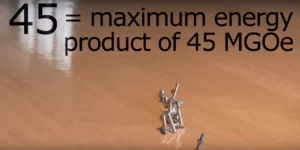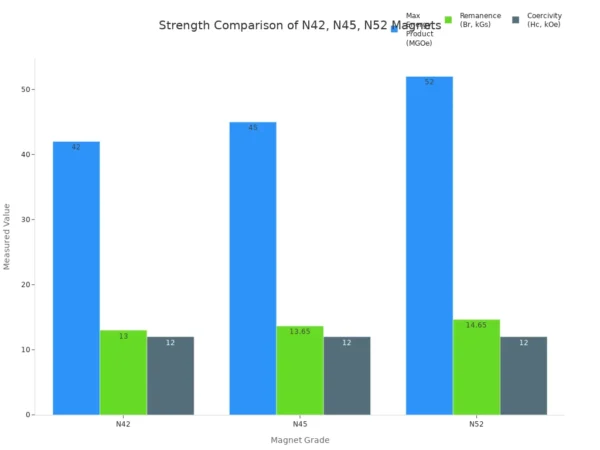Neodymium magnets have the strongest magnetism, but we have to use them properly to keep them magnetic. Otherwise, they can lose their magnetism under high-temperature conditions. This is not a quality issue of the neodymium magnets, but the nature of this type of material.
Osenc is a custom neodymium magnet supplier, and we will tell you the basics about the demagnetization of neodymium magnets on this page.
High Temperatures Demagnetization
Neodymium magnets will gradually lose their magnetism (demagnetize) when they are heated to exceed its maximum working temperature.
Their magnetism will disappear completely when they are heated to exceed their Curie temperatures, then they will be transformed into paramagnetic materials.
And they will recover to ferromagnetic materials when their temperatures drop below their Curie temperatures.
Working temperature and Curie temperature
The Curie temperature represents the theoretical maximum working temperature limit of the magnets.
Please keep in mind, the appropriate working temperatures of neodymium magnets are much lower than the Curie temperatures.
When the temperatures of neodymium magnets exceed the maximum working temperatures, the magnetism will slowly decrease
However, when the temperatures of neodymium magnets come back to normal, the magnetism will be restored after re-magnetization. That means this is reversible.
When the magnets exceed Curie temperatures, their magnetism will completely disappear and cannot be restored even after re-magnetization. That means this is irreversible.
Temperatures to demagnetize
Depending on the specific grades of neodymium magnets, they have the temperature data listed below.
Working temperature 80℃ – 240℃ (176°F – 464°F)
Curie temperature 310℃-350℃ (590°F – 662°F)
N: Maximum working temperature 80℃ (176°F), Curie temperature 310℃ (590°F)
M: Maximum working temperature 100℃ (212°F), Curie temperature 340℃ (644°F)
H: Maximum working temperature 120℃ (248°F), Curie temperature 340℃ (644°F)
SH: Maximum working temperature 150℃ (302°F), Curie temperature 340℃ (644°F)
UH: Maximum working temperature 180℃ (356°F), Curie temperature 350℃ (662°F)
EH: Maximum working temperature 200℃ (392°F), Curie temperature 350℃ (662°F)
AH: Maximum working temperature 230℃ (446°F), Curie temperature 350℃ (662°F)
Generally speaking, if a neodymium magnet has a maximum working temperature of more than 200 ℃, we call it a high–temperature magnet.
If your applications have requirements for temperature resistance, choose the right type according to the performance grades.
And feel free to contact Osenc if you need help with custom neodymium magnets, which will need to fit the working temperatures of your applications.

I’m Ben, with over 10 years in the permanent magnet industry. Since 2019, I’ve been with Osenc, specializing in custom NdFeB magnet shapes, magnetic accessories, and assemblies. Leveraging deep magnetic expertise and trusted factory resources, we offer one-stop solutions—from material selection and design to testing and production—streamlining communication, accelerating development, and ensuring quality while reducing costs through flexible resource integration.


